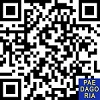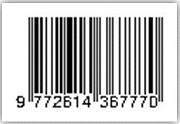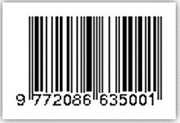DEVELOPMENT OF PICTORIAL-BASED FIVE-TIER MULTIPLE CHOICE DIAGNOSTIC TEST TO IDENTIFY MISCONCEPTIONS OF ELECTROCHEMICAL CELL MATERIAL
Abstract
Abstrak: Miskonsepsi dalam pembelajaran kimia, khususnya pada sel elektrokimia seperti sel volta dan elektrolisis, sering terjadi karena kompleksitas konsep redoks, perpindahan elektron, serta proses di anoda dan katoda. Penelitian ini bertujuan mengembangkan instrumen tes diagnostik five-tier multiple choice berbasis pictorial untuk mengidentifikasi miskonsepsi pada materi ini. Metode yang digunakan adalah Research and Development (R&D) model Tessmer, yang terdiri dari lima tahap: preliminary, self-evaluation, expert review, one-to-one evaluation, dan small group evaluation. Validitas diuji menggunakan Content Validity Ratio (CVR) dan Content Validity Index (CVI), sementara reliabilitas diuji dengan model Rasch. Hasil penelitian menunjukkan bahwa instrumen ini valid (CVI rata-rata 1,00) dan memiliki reliabilitas sedang (Cronbach’s Alpha 0,71-0,76). Instrumen ini berhasil mengidentifikasi miskonsepsi terkait prinsip kerja sel volta, elektrolisis, dan arah aliran elektron. Mayoritas peserta didik mengandalkan internet sebagai sumber utama informasi, tetapi kurangnya verifikasi memperbesar potensi miskonsepsi. Instrumen ini diharapkan membantu guru dalam menyusun strategi pembelajaran berbasis data untuk meningkatkan pemahaman peserta didik.
Abstract: Misconceptions in chemistry learning, particularly in electrochemical cells such as voltaic cells and electrolysis, often arise due to the complexity of redox concepts, electron transfer, and processes occurring at the anode and cathode. This study aims to develop a pictorial-based, five-tier multiple-choice diagnostic test to identify misconceptions in this subject. The method used follows the Research and Development (R&D) approach based on the Tessmer model, which consists of five stages: preliminary analysis, self-evaluation, expert review, one-to-one evaluation, and small group evaluation. Validity was assessed using the Content Validity Ratio (CVR) and Content Validity Index (CVI), while reliability was tested using the Rasch model. The results indicate that the instrument is valid (average CVI = 1.00) and has moderate reliability (Cronbach's Alpha = 0.71–0.76). It successfully identifies misconceptions related to the working principles of voltaic cells, electrolysis, and the direction of electron flow. The majority of students rely on the internet as their primary source of information; however, the lack of verification increases the risk of misconceptions. This instrument is expected to help teachers design data-driven learning strategies to enhance students' understanding.
Keywords
Full Text:
PDFReferences
Abd.Rachman, F., Ahsanunnisa, R., & Nawawi, E. (2017). Development of LKPD Based on Critical Thinking of Solubility Materials and Solubility Results in Chemistry Subjects in High School. ALKIMIA : Jurnal Ilmu Kimia Dan Terapan, 1(1), 16–25. https://doi.org/10.19109/alkimia.v1i1.1326
Ahmad, N. J., & Lah, Y. C. (2013). A Designed Teaching Sequence as a Tool to Improve Students ’ Conceptual Understanding of the Conductivity in the Electrolytic Cell A Designed Teaching Sequence as a Tool to Improve Students ’ Conceptual Understanding of the Conductivity in the Electrolyte. Canadian Center of Science and Education, 9(2). https://doi.org/10.5539/ass.v9n2p298
Akker, J. an van den, Branch, R. M., Gustafson, K., Nieveen, N., & Plomp, T. (1999). Design Approaches and Tools in Education and Training. In Stochastic Environmental Research and Risk Assessment (Vol. 29, Issue 7). https://doi.org/10.1007/s00477-014-0937-9
Annisa, R., Astuti, B., & Mindyarto, B. N. (2019). Four Tier Diagnostic Test for Identification of Students' Understanding and Misconceptions on Regular Circular Motion Material. Jurnal Pendidikan Fisika Dan Kelilmuan (JPFK), 5(1), 25–32. https://doi.org/http://doi.org/10.25273/jpfk.v5i1.3546
Budiharti, R., Radiyono, Y., Rizky, N., Nuraini, A., Putri, H. V., Saputro, D. E., & Adhitama, E. (2018). Development of a Four-Stage Misconception Diagnostic Test on Kinematics. Jurnal Ilmiah Pendidikan,2,237–249. https://doi.org/http://dx.doi.org/10.21831/cp.v37i2.16491
Hanson, R. (2015). Identifying Students’ Alternative Concepts in Basic Chemical Bonding – A Case Study of Teacher Trainees in the University of Education, Winneba. International Journal of Innovative Research and Development, 4(1), 115–122.
Hermita, N., Suhandi, A., Syaodih, E., Samsudin, A., Isjoni, Johan, H., Rosa, F., Setyaningsih, R., Sapriadil, & Safitri, D. (2017). Constructing and Implementing a Four-Tier Test about Static Electricity to Diagnose Pre-service Elementary School Teacher Misconceptions. International Conference on Mathematics and Science Education. https://doi.org/10.1088/1742-6596/895/1/012167
Inggit, S. M., Liliawati, W., & Suryana, I. (2021). Identification of Misconceptions and Their Causes Using the Five-Tier Fluid Static Test (5TFST) Instrument in Grade XI Students of Senior High School. Journal of Teaching and Learning Physics, 6(1), 49–68. https://doi.org/10.15575/jotalp.v6i1.11016
Kaltakci-gurel, D., Eryilmaz, A., & Mcdermott, L. C. (2017). Development and application of a four-tier test to assess pre-service physics teachers ’ misconceptions about geometrical optics. Research in Science & Technological Education, 5143(April), 1–23.
Kristiana, E., Sidauruk, S., & Meiliawati, R. (2020). Difficulties of Class X MIA State High School Students in Palangka Raya City for the 2018/2019 Academic Year in Understanding the Concept of Lewis Structure Using the Two-Tier Multiple Choiche Instrument. Jurnal Ilmiah Kanderang Tingang, 11(1), 200–208. https://doi.org/10.37304/jikt.v11i1.87
Martin Tessmer. (1993). Planning and Conducting Formative Evaluations. Routledge Taylor & Francis Group.
Muderawan, I. W., Wiratma, I. G. L., & Nabila, M. Z. (2019). Analysis of the Factors Causing Students' Learning Difficulties in Solubility Materials and Solubility Results. Jurnal Pendidikan Kimia Indonesia, 3(1), 17. https://doi.org/10.23887/jpk.v3i1.20944
Nuraisyah, S. A., Nahadi, & Hernan. (2022). Profile of Misconception of High School Students in the City of Bandung on Salt Hydrolysis Materials Using a Pictorial-Based Two-Level Multiple-Choice Diagnostic Test. Jurnal Riset Dan Praktik Pendidikan Kimia, 10(1), 77–85.
Nurlita, S. (2022). Development of four-tier diagnostic tests based on science process skills to identify misconceptions in redox materials. Journal of Natural Science Learning, 02(02), 90–103.
Permana, I., Permata, F., Latifah, U., Al-anshori, J., & Rachman, S. D. (2019). Efforts to Improve Understanding of Chemistry and Its Application Through Socialization and Practicum Methods. Jurnal Pengabdian Kepada Masyarakat, 4(6), 129–132.
Putri, E. S., & Rinaningsih. (2021). Review: Diagnostic Tests as Formative Tests in Chemistry Learning. Journal of Chemical Education, 10(1), 20–27.
Rahayu, S., Treagust, D. F., Chandrasegaran, A. L., Kita, M., & Ibnua, S. (2011). Assessment of electrochemical concepts: A comparative study involving senior high-school students in Indonesia and Japan. Research in Science and Technological Education, 29(2), 169–188. https://doi.org/10.1080/02635143.2010.536949
Roghdah, S. J., Zammi, M., & Mardhiya, J. (2021). Development of Four-Tier Multiple Choice Diagnostic Test to Determine the Level of Students' Understanding of Concepts in Thermochemical Materials. Phenomenon : Jurnal Pendidikan MIPA, 11(1), 57–74.
Rokhim, D. A., Rahayu, S., & Dasna, I. W. (2023). Analysis of Chemical Misconceptions and Their Diagnostic Instruments: Literature Review. Jurnal Inovasi Pendidikan Kimia, 17(1), 17–28. https://doi.org/10.15294/jipk.v17i1.34245
Rosita, I., Liliawati, W., & Samsudin, A. (2020). Development of Five-Tier Newton's Laws Test (5TNLT) Instrument to Identify Students' Misconceptions and Causes of Misconceptions. Jurnal Pendidikan Fisika Dan Teknologi (JPFT), 6(2). https://doi.org/https://doi.org/10.29303/jpft.v6i2.2018
Santi, A. N. I., & Rahayu, M. (2022). Analysis of Students' Misconceptions on Electrolyte and Non-Electrolyte Solution Materials Using Pictorial-Based Four-Tier Diagnostic Tesr Multirepresentation Instrument. Journal of Chemical Education, 11(3), 210–219.
Sari, D. A. (2021). Application of Inquiry-Based Learning to Electrochemistry Materials on Conceptual Understanding, Mental Models and Student Attitudes. Orbital: Jurnal Pendidikan Kimia, 5(2), 137–150. https://doi.org/10.19109/ojpk.v5i2.9178
Savira, I., Wardani, S., Harjito, & Noorhayati, A. (2019). Design of Three Tiers Multiple Choice Test Instruments for the Analysis of Student Misconceptions Regarding Buffer Solutions. Jurnal Inovasi Pendidikan Kimia, 13(1), 2277–2286. https://doi.org/https://doi.org/10.15294/jipk.v13i1.15924
Simamora, R., Maison, & Kurniawan, W. (2023). Identification of Misconceptions of Students Using Five-Tier Diagnostic Test on Static Fluid Materials at SMAN 7 Jambi City. Jurnal Penelitian Pendidikan Fisika, 8(2), 139–144. https://doi.org/10.36709/jipfi.v8i2.18
Sugiyono. (2013). Quantitative, Qualitative and R&D Research Methods (19th). CV Alfabeta.
Sugiyono. (2022). Quantitative, Qualitative, and R&D Research Methods. Penerbit Alfabeta.
Tavassoli, A., Jahandar, S., & Khodabandehlou, M. (2013). The Effect of Pictorial Contexts on Reading Comprehension of Iranian High School Students : a Comparison Between Pre-Vs. During Reading Activities. Indian Journal of Fundamental and Applied Life Sciences, 3(3), 553–565.
Virgiawan, W., Nahadi, Kusrijadi, A., Siswaningsih, W., & Rahmawati, T. (2020). Profile of Misconception of State High School Students in the City of Bandung on Mol Concept Material Using a Pictorial-Based Two-Tier Diagnostic Test. Jurnal Riset Dan Praktik Pendidikan Kimia, 8(1).
Wahyuni, S., Maison, & Hidayat, M. (2022). Identification of Misconceptions of the Five Tier Diagnostic Test on Energy Matter and the Law of Energy Conservation. Jurnal Metaedukasi: Jurnal Ilmiah Pendidikan, 4(1), 45–53.
DOI: https://doi.org/10.31764/paedagoria.v16i2.28703
Refbacks
- There are currently no refbacks.
Copyright (c) 2025 Nur Afni Himmatul Ulya, Setia Rahmawan

This work is licensed under a Creative Commons Attribution-ShareAlike 4.0 International License.
Paedagoria : Jurnal Kajian, Penelitian dan Pengembangan Kependidikan
Fakultas Keguruan & Ilmu Pendidikan | Universitas Muhammadiyah Mataram.
_______________________________________________
 | Paedagoria : Jurnal Kajian, Penelitian dan Pengembangan Kependidikan |
______________________________________________
CURRENT INDEXING:
EDITORIAL OFFICE:

















